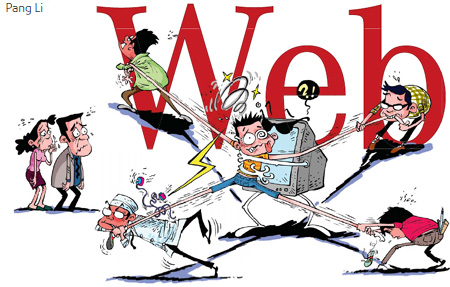With the COM 125 Introduction to the Internet class wrapping up this week, I wanna do a short recap on the Internet. But before that, here’s a video on the future of Internet – Web 3.0 supported by STI International: http://www.sti2.org. With Web 2.0 created and the rise of Social media, the future for the Internet is indeed bright. Estimating to bloom from 2010-2020, Web 3.0 known as the Semantic Web will bring much definition to how the search engines defines our search in databases, thus making the Internet more human-like.
In·ter·net
noun
a vast computer network linking smaller computer networks worldwide (usually preceded by the ). The Internet includes commercial, educational, governmental, and other networks, all of which use the same set of communications protocols.
Here are some of the dates and important landmarks in the history of Internet:
1969, Aparnet
1972: CYCLADES
1974: The beginning of TCP/IP
1978: The Bulletin Board System (BBS)
1984: Domain Name System (DNS)
1989: The proposal for the World Wide Web
1991: First web page created
1995: Commercialization of the internet
1995: Geocities, the Vatican goes online, and JavaScript
2000: The bubble bursts
2001: Wikipedia is launched
2003: MySpace becomes the most popular social network
2004: Web 2.0
2004: Social Media and Digg
2004: “The” Facebook open to college students
2005: YouTube – streaming video for the masses
2006: Twitter gets twittering
2007: Major move to place TV shows online
2007: The iPhone and the Mobile Web
2008: “Internet Election”
2009: ICANN policy changes
Well, of course for more in-depth information on the history of the internet, check out: The History of the Internet in a Nutshell









